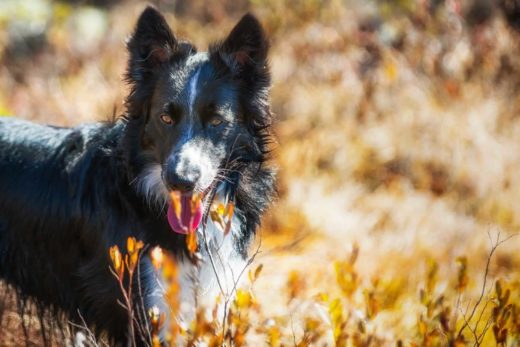When dogs are sleeping, their body will shake or twitch from time to time. If you ask your vet, the vet will probably tell you that, in most cases, “Let sleeping dogs lie” and that this behavior is perfectly normal for dogs. But there are exceptions, and sometimes a dog twitching while sleeping can be a warning sign of an underlying illness.

6 Reasons Your Dog May Shiver
1. The Dog Is Dreaming
Dreaming should be considered the most common cause of dog twitching. If dogs are sleeping well, they will frequently dream when they reach deep sleep. In a dog’s dream, everything is possible. They may dream of chasing a kitten, chasing food that escaped from them, or running and playing with their owner in a vast meadow. When dogs are happy in their dreams, they may twitch. Generally, this twitching is like a muscle movement and does not affect the dog’s body.
Of course, if your dog is having a nightmare, it may twitch as well. Dogs will whimper, cry, and even sharking in fear when they have nightmares. If you don’t want your dog to remain trapped in the nightmare, the owner can consider waking the dog up, calling the dog from beside him or her, or playing soft music to wake him or her up.
By the way, no one knows what the dog is dreaming about, and everything is our best guess.
2. Dogs With Epilepsy
If your dog is convulsing abnormally, we need to consider if he has epilepsy. Epilepsy is due to overexcitation of specific nerve cells in the brain, resulting in sudden transient abnormalities in brain function. When a dog has a seizure, there are perceptual disturbances, convulsions, behavioral disturbances, etc. Dog epilepsy is divided into primary and secondary epilepsy, with primary epilepsy being more common and accounting for most seizure cases in dogs. Primary epilepsy in dogs is generally more common when dogs are six weeks to 6 years old and is more common in breeds such as Beagles, Bernese Mountain Dogs, and Miniature Schnauzers.
Seizures in dogs usually last less than 5 minutes, and the owner can move the things around immediately after discovery to prevent the dog from hitting. After the seizure, the owner can help him clean his mouth because the attack will be accompanied by white foam vomiting. If the dog has a seizure that lasts longer than 5 minutes, the owner should take the dog to the doctor immediately. Otherwise, it could be life-threatening.
3. Generalized Tremor Syndrome (GTS)
GTS is also known as steroid-responsive tremor syndrome or white husky dog syndrome. Initially found in small white dogs (such as Maltese and Western Highland White Terriers), it can occur in dogs of any size, breed, or color. No one knows the cause of GTS.
4. Calcium Deficiency In Dogs
Just like humans, a calcium deficiency in dogs may also lead to convulsions. The dog’s body develops quickly in its early years, with small dogs reaching adulthood before they are one year old and larger ones perhaps a little slower. Before a dog is one year old is the time when the dog needs calcium the most. Generally, if the owner feeds the dog puppy-specific dog food, the dog will rarely have a calcium deficiency. If your dog is deficient in calcium, the owner can consider the food the dog eats does not contain enough calcium or a problem with the dog’s digestion and absorption. Even if there is enough calcium in the food, the dog can not absorb it. If the long-term consumption of animal liver, dogs should pay more attention to the liver contains a lot of vitamin A, which will inhibit the absorption of calcium.





